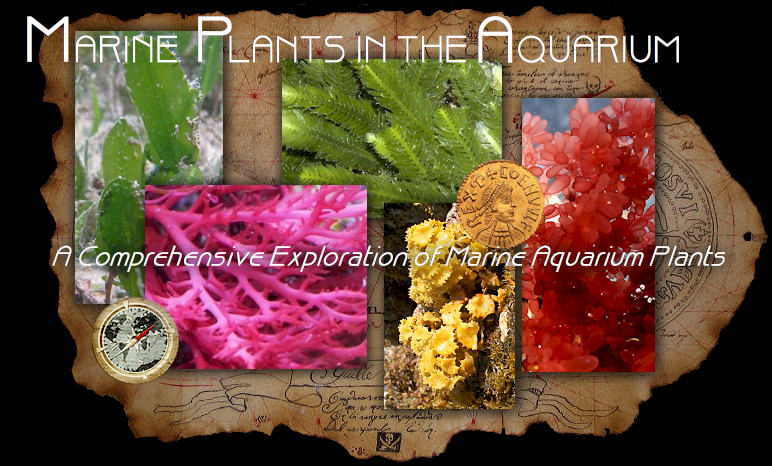 |
|
Marine
Plants in the Aquarium is an online resource for the identification and care of marine macro algae and sea
grass. The guide features over 70 of the most commonly available species
of marine plants with photographs, detailed descriptions and aquarium
care.
To explore
the site, click on the topics below for specific information regarding
macro algae and sea grass care or browse the catalog of common aquarium
species below. Most of the species in the catalog are native to Florida
and have been either collected or observed by the author. A handful of species are
tank cultured specimens imported
from the Pacific. Many of the
species featured on the website are available to purchase online from Gulf Coast Ecosystems.
Our selection is very seasonal so the availability of species will vary. Your
support and business is appreciated. www.live-plants.com
|
| Introduction |
About
the Author |
Marine
Plants |
Sourcing Plants |
The
Refugium |
| Aquascaping |
Substrates |
Filtration |
Lighting |
Maintenance |
| Plant
Nutrients |
Plant
Reproduction |
Case for Caulerpa |
Glossary |
References |
|
|
|
Green Algae
(Chlorophyta)
|
|
|
|
There
are over 900 different species of marine micro and macro algae that make
up the genus. The green coloration in marine algae is caused by
the dominant pigment chlorophyll. The colors vary between individual species
and range from
bright green to yellow or dark jade. They're among the most diverse and
abundant group of all macro algae, representing extremely varied shapes
and characteristics, as well as world wide distribution. They spread and
grow by two main methods: fragmentation and by releasing reproductive
spores. |
|
|
|
|
|
|
|
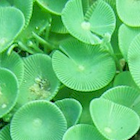
|
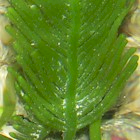
|
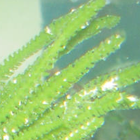
|
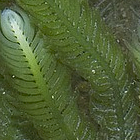
|
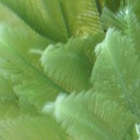
|
|
Acetabularia sp.
|
Caulerpa ashmeadii
|
Caulerpa cuppressiodes
|
Caulerpa mexicana
|
Caulerpa paspaloides
|
|
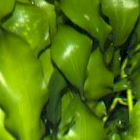
|
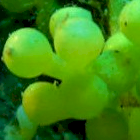
|
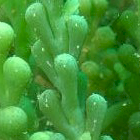
|
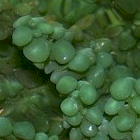
|
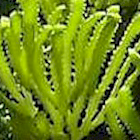
|
|
Caulerpa prolifera |
Caulerpa racemosa |
Caulerpa racemosa var cylindracea |
Caulerpa racemosa var peltata |
Caulerpa serrulata |
|
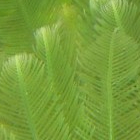
|
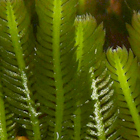
|
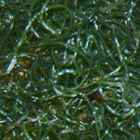 |
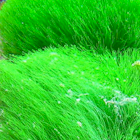
|
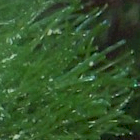
|
|
Caulerpa sertularoides |
Caulerpa taxifolia |
Chaetomorpha sp. |
Chlorodesmis sp. |
Cladophora prolifera |
|
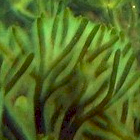
|
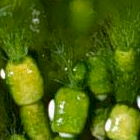
|
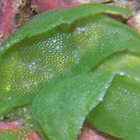
|
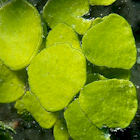
|
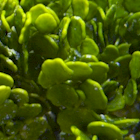
|
|
Codium sp. |
Cymopolia barbata |
Dictyoshpaeria cavernosa |
Halimeda discoidea |
Halimeda incrassata |
|
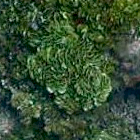
|
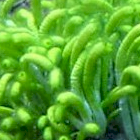
|
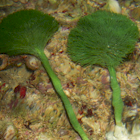
|
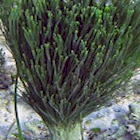
|
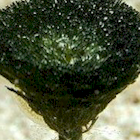 |
|
Halimeda opuntia |
Neomeris annulata |
Penicillus
capitatus |
Penicillus
dumetosus |
Pencillus pyriformis |
|
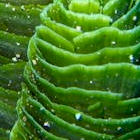
|
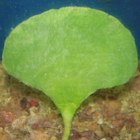
|
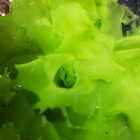
|
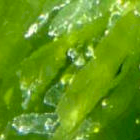
|
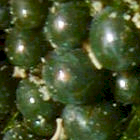
|
|
Rhipocephalus
Phoenix |
Udotea flabellum |
Ulva sp. |
Ulva intestinalis |
Valonia sp. |
|
|
|
Red Algae
(Rhodophyta)
|
|
| The
genus Rhodophyta is the largest and most diverse group of tropical and
temperate marine algae with more than 2,000 species found worldwide. Their
dominant pigment is phycoerythrin, which gives off rich shades of
red, orange and blue. Species of red macro algae are some of the most
varied and striking of all marine algae and are highly sought after as
aquarium specimens.
Identification can be difficult with some species, such as Gracilaria,
while some collected specimens are not even documented at all. |
|
|
|
|
|
|
|
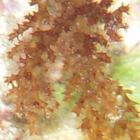
|
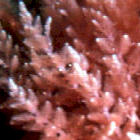
|
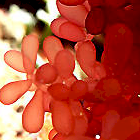
|
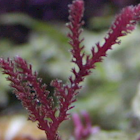
|
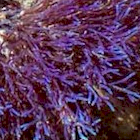
|
|
Acanthophora spicifera
|
Asparagopsis
taxiformis |
Botryocladia occidentalis |
Bryothamnion triquetrum |
Coelothrix
irregularis |
|
|
|
|
|
|
|
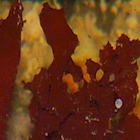
|
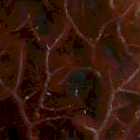
|
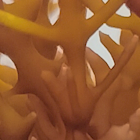
|
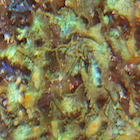
|
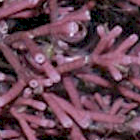
|
|
Cryptonemia crenulata |
Dasya sp. |
Eucheuma spinosum |
Fauchea sp. |
Galaxaura sp. |
|
|
|
|
|
|
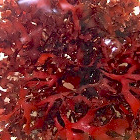
|
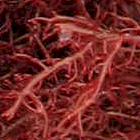
|
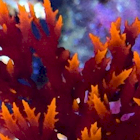
|
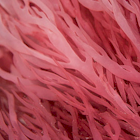
|
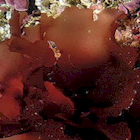 |
| Gracilaria hayi |
Gracilaria
tikvahiae |
Halymenia durvillei |
Halymenia floresia |
Halymenia floridana |
|
|
|
|
|
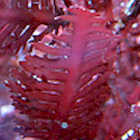 |
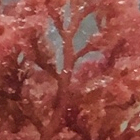
|
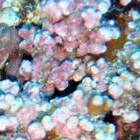
|
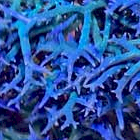
|
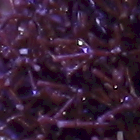
|
|
Haliptilon sp. |
Hetereosiphona gibessii |
Hydrolithon sp. |
Hypnea pannosa |
Jania sp. |
|
|
|
|
|
|
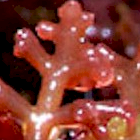
|
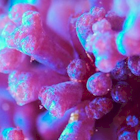
|
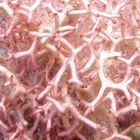
|
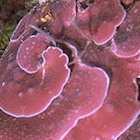
|
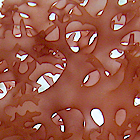
|
|
Laurencia sp. |
Laurencia iridescens |
Liagora ceranoides |
Lithophyllum
sp. |
Nemastoma sp. |
|
|
|
|
|
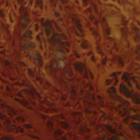 |
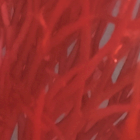
|
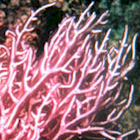
|
|
|
|
Portieria sp. |
Scinaia complanata |
Tricholgloea sp. |
|
|
|
|
|
|
|
|
Brown Algae
(Phaeophyta)
|
|
| Brown
macro algae are abundant worldwide with most of their distribution in
temperate waters as varieties of Kelp. The brown coloration is due
to the brown pigment (fucoxanthin) and individual species vary in color
from yellow to dark brown, depending on the depth. They're a few
tropical species of interest to hobbyists that are offered seasonally.
Most however, are encountered as pests in reef aquariums and introduced
on live rock. Brown algae grows prolifically under the right conditions
and certain species can be difficult to remove, such as the highly
invasive Dictoya. |
|
|
|
|
|
|
|
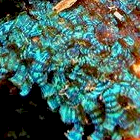
|
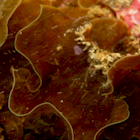
|
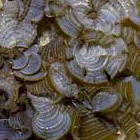
|
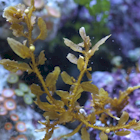
|
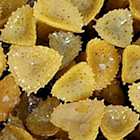
|
|
Dictoya sp. |
Lobophora sp. |
Padina sp. |
Sargassum sp. |
Turbinaria sp. |
|
|
|
|
|
|
Seagrass
(Angiospermae)
|
|
| Sea
grasses are the most productive group of marine plants in the ocean,
forming extensive meadows in shallow, nutrient-rich environments. There
are approximately 60 known species that occur in tropical and
sub-tropical waters worldwide. Sea grasses provide shelter and habitat
for juvenile fish and invertebrates, and effectively filter near-shore
habitats of nutrients, creating an oxygen rich environment. They are
also an important component of the coral reef by filtering and buffering
the flow of water and trapping sediments before they reach delicate
corals. There are currently about 7 species available to the hobbyist
for culture in the aquarium today. Most species require deep sand beds
(6" or more) as their root systems are extensive and demand for
organic nutrients high. |
|
|
|
|
|
|
|
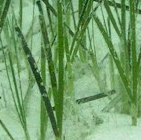
|
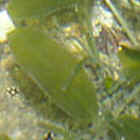
|
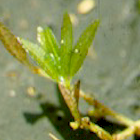
|
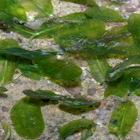
|
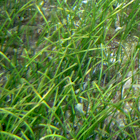
|
|
Halodule wrightii |
Halophila Decipiens |
Halophila engelmannii |
Halophila Ovalis |
Syringodium
filiforme |
|
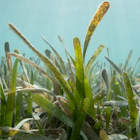
|
|
|
|
|
|
Thalassia testudinum |
|
|
|
|
|
|
|
Mangroves
|
| There
are about 60 known species of mangroves world wide, with just three varieties native to the United States. They are the red mangrove (Rhizophora
mangle), white mangrove (Laguncularia racemosa) and
black mangrove (Avicennia germinans). Most mangrove specimens
find their way into the aquarium trade by the collection of seeds or
pods or by propagation on land. Of the three varieties, only one is
really suitable for use in the marine aquarium, the red mangrove. The
white mangrove is not a good candidate for use in the aquarium, because
it does not form aerial roots as the others do and usually can not
survive very long with the roots completely submersed. In their natural
environment, black mangroves typically grow upland behind the red, while
the white mangrove is often found at even higher elevations. The black
mangrove does form breathing tubes, however, propagation in the aquarium
can be difficult from seed, unless initially grown above the water line. |
|
|
|
|
|
|
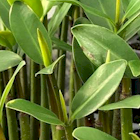
|
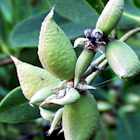
|
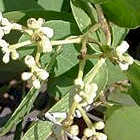
|
|
|
|
Rhizophora
mangle |
Aviennia
germinns |
Laguncularia racemosa |
|
|
|
|
|
|
|
|
Copyright © 2024 GCE All rights reserved. No part
of this online publication may be reproduced in any form by any
means without the expressed permission of the author. All images
are the property of Gulf Coast Ecosystems unless otherwise noted
and should not be reproduced or distributed without permission.
|